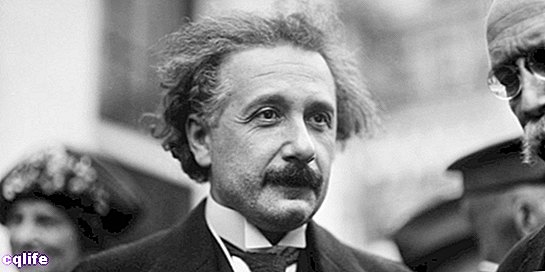We explain what the theory of relativity is and what are the two theories that compose it. Also, who was Albert Einstein.

What is the Theory of Relativity?
It is known as Theory of Relativity or even Einstein's Theory, the set of scientific formulations developed at the beginning of the 20th century by the physicist Albert Einstein (1879-1955). Its objective was to resolve the theoretical incompatibility that exists between the two main fields of physics: mechanics. Newtonian and the electromagnetism.
These formulations were published as two different scientific theories:
- Theory of special relativity. A treatise on physical of movement of bodies in the absence of gravitational forces or gravity, where Maxwell's equations referring to electromagnetism were made compatible with those of Newton referring to motion.
- Theory of general relativity. A theoretical approach to the gravity and of both inertial and non-inertial reference frames. Generalizes the theory of special relativity and replaces theNewtonian gravity in cases where the gravitational fields are very strong.
The basic foundations of the Theory of Relativity can be summarized in that the location in thespace Yweather (referred to as space-time, a kind of four-dimensional matrix proposed by Hermann Minkowski) of a given phenomenon, will always depend on the speed at which the observer moves.
Or put in simpler terms: that things can be perceived in a very different way depending on the observer's point of view, even with regard to dimensions that until now were thought absolute, such as time or space.
This, which apparently seems like something simple, allowed to rethink the way in which contemporary physics understood time and space. In addition, it opened the door to a whole series of new equations around phenomena that, initially, seem to go against common sense.
These phenomena include spatial contraction, time dilation, the universal speed limit (equivalent to thespeed of light). On the other hand, Einstein discovered the equivalence between mass and energy, which he expressed in the famous formula E = m.c2 (Energy equals mass times velocity squared).
Importance of the Theory of Relativity

Einstein's Theories refounded modern physics. They were quickly adopted by all the major centers of thought and study of physics in the world.
They also had an important impact on the philosophy, since among other things they denied the existence of an absolute time and allowed to think, in serious terms, matters that were once exclusive to fantasy and reverie, such as time manipulation or high-speed space travel.
Although its specific explanation may be tedious or complicated, it should be noted that the Theory of Relativity has been proven. In fact, it has been put into practice in matters as complex as the atomic Energy (the atomic bombs, for example).
In addition, there is evidence of the slight but undeniable differences in aging and the passage of time that occur between astronauts and inhabitants of the Earth, since the latter, being more subject to the planet's gravity, live the time faster.
Einstein's theories allowed the emergence of cosmology, which is a branch of physics dedicated to determining the conditions oforigin of the universe. His observations on the curvature of light were publicly verified in 1919, in the framework of asolar eclipse.
Albert Einstein's biography

Albert Einstein was born in Ulm, Germany, in 1879. Son of Hermann Einstein and Pauline Koch, family Of Jewish descent, his intellectual development is said to have been delayed and as a child he was notoriously slow to express himself, leading his parents to think that he had some kind of mental retardation.
As a child he was shy, patient and methodical. Later he demonstrated a notorious talent for natural Sciences, despite never having been a brilliant student. The rigidity of the German educational system in imperial times always worked against him and it is said that he had some altercations with the authorities.
He graduated from professor of math and physicist, and his first wife was the radical feminist Mileva Marić. His genius went unnoticed and wasted until the beginning of the 20th century when he published his first essays about physics.
The brilliance of his contributions to the field did not prevent him from being afraid of the anti-Semitic policies proclaimed by the German Nazi regime (which later came to power in 1933). For that reason Einstein fled to the United States in 1932, along with his second wife, his cousin Eva Loewenthal.
In the United States he obtained nationalization and continued his studies, focused on a theory that would unify the four fundamental interactions of the nature. But this work was left unfinished.
At age 76, Einstein suffered an abdominal aortic aneurysm and died on April 18, 1955, at Princeton Hospital. His body was cremated that same day. Previously, the hospital pathologist removed his brain, without permission from the family, in order to preserve it for future studies regarding his incredible intelligence.
